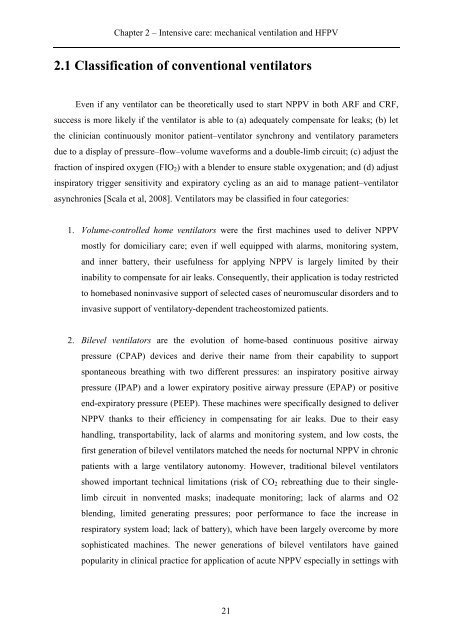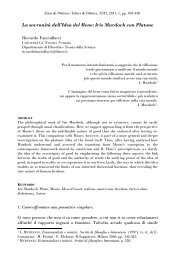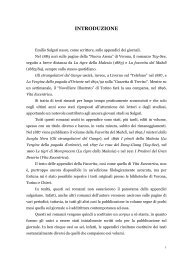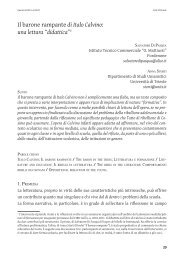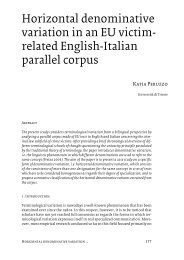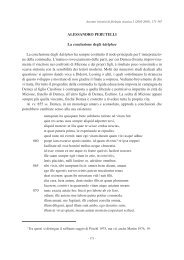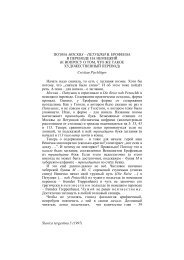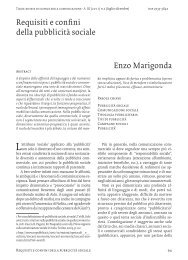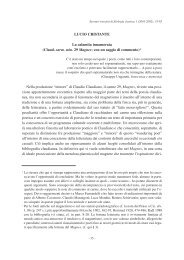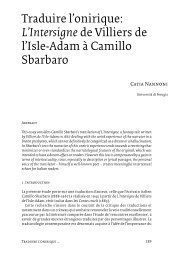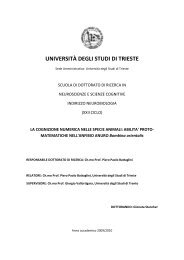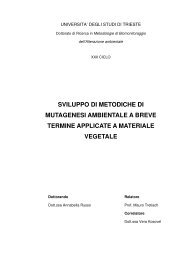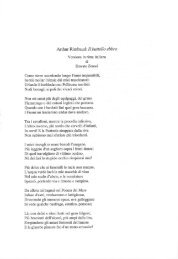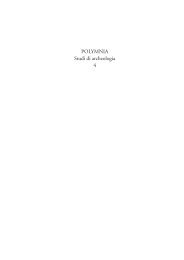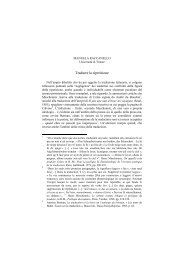UNIVERSITÀ DEGLI STUDI DI TRIESTE - OpenstarTs - Università ...
UNIVERSITÀ DEGLI STUDI DI TRIESTE - OpenstarTs - Università ...
UNIVERSITÀ DEGLI STUDI DI TRIESTE - OpenstarTs - Università ...
You also want an ePaper? Increase the reach of your titles
YUMPU automatically turns print PDFs into web optimized ePapers that Google loves.
Chapter 2 – Intensive care: mechanical ventilation and HFPV<br />
2.1 Classification of conventional ventilators<br />
Even if any ventilator can be theoretically used to start NPPV in both ARF and CRF,<br />
success is more likely if the ventilator is able to (a) adequately compensate for leaks; (b) let<br />
the clinician continuously monitor patient–ventilator synchrony and ventilatory parameters<br />
due to a display of pressure–flow–volume waveforms and a double-limb circuit; (c) adjust the<br />
fraction of inspired oxygen (FIO 2 ) with a blender to ensure stable oxygenation; and (d) adjust<br />
inspiratory trigger sensitivity and expiratory cycling as an aid to manage patient–ventilator<br />
asynchronies [Scala et al, 2008]. Ventilators may be classified in four categories:<br />
1. Volume-controlled home ventilators were the first machines used to deliver NPPV<br />
mostly for domiciliary care; even if well equipped with alarms, monitoring system,<br />
and inner battery, their usefulness for applying NPPV is largely limited by their<br />
inability to compensate for air leaks. Consequently, their application is today restricted<br />
to homebased noninvasive support of selected cases of neuromuscular disorders and to<br />
invasive support of ventilatory-dependent tracheostomized patients.<br />
2. Bilevel ventilators are the evolution of home-based continuous positive airway<br />
pressure (CPAP) devices and derive their name from their capability to support<br />
spontaneous breathing with two different pressures: an inspiratory positive airway<br />
pressure (IPAP) and a lower expiratory positive airway pressure (EPAP) or positive<br />
end-expiratory pressure (PEEP). These machines were specifically designed to deliver<br />
NPPV thanks to their efficiency in compensating for air leaks. Due to their easy<br />
handling, transportability, lack of alarms and monitoring system, and low costs, the<br />
first generation of bilevel ventilators matched the needs for nocturnal NPPV in chronic<br />
patients with a large ventilatory autonomy. However, traditional bilevel ventilators<br />
showed important technical limitations (risk of CO 2 rebreathing due to their singlelimb<br />
circuit in nonvented masks; inadequate monitoring; lack of alarms and O2<br />
blending, limited generating pressures; poor performance to face the increase in<br />
respiratory system load; lack of battery), which have been largely overcome by more<br />
sophisticated machines. The newer generations of bilevel ventilators have gained<br />
popularity in clinical practice for application of acute NPPV especially in settings with<br />
21


